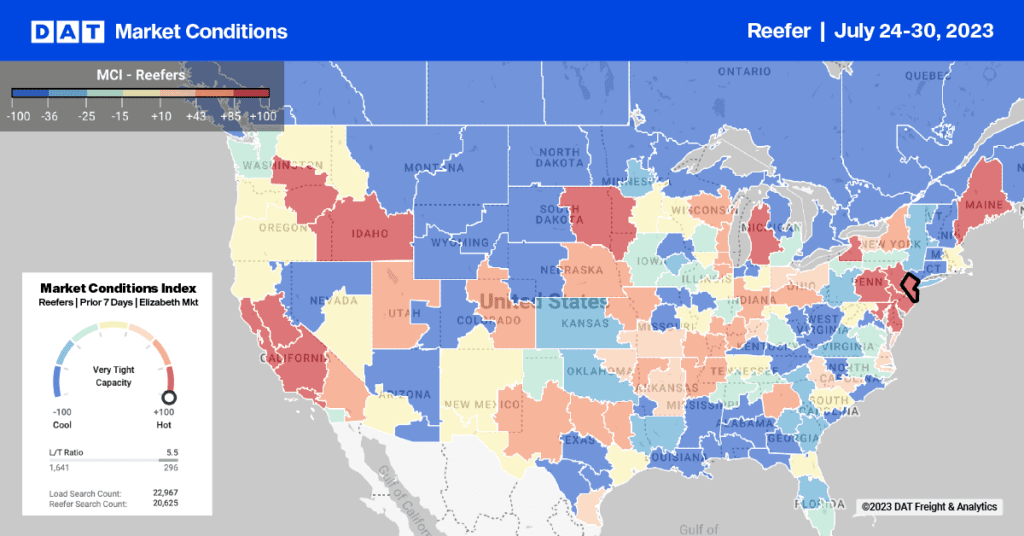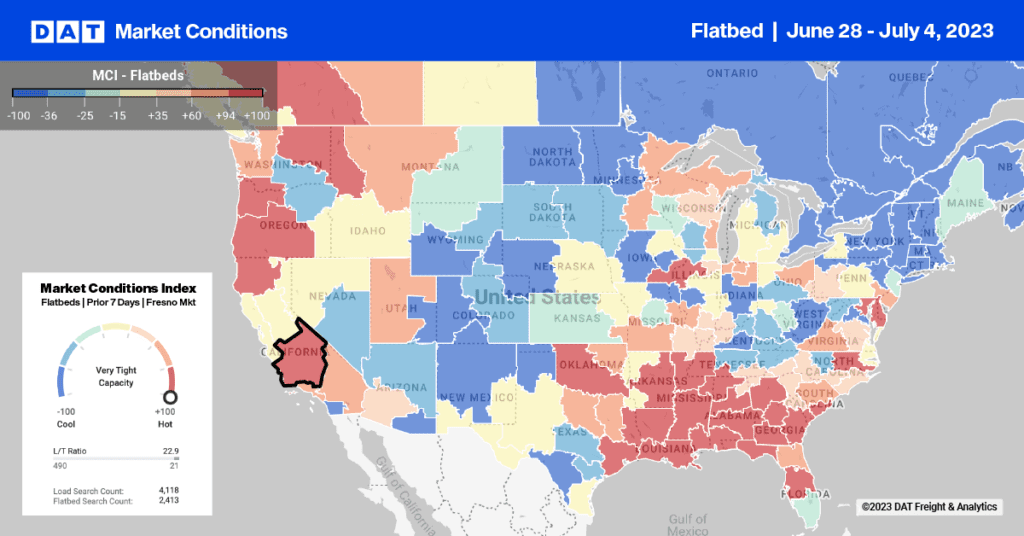Freight movement typically slows in November, especially on the spot market. There isn’t as much competition for trucks, and rates tend to slide and stay low throughout the winter.
Not this year. For the first time since DAT started tracking monthly load posts in our North American Freight Index in 1996, there may be more activity on the DAT Load Board Network in November than there was in October.
What’s driving the increase? Here are three things to consider:
1. Late imports. A late burst of imported goods arrived at seaports during the week ending November 17, and vans were in high demand. Outbound van rates rose from Los Angeles and now average $2.11 per mile. Nationally, van rates jumped 7 cents per mile during the first half of November to $1.89 per mile including fuel, as recorded in DAT Truckload Rate Index.
2. Reefer freight. The national average rate for reefers rose 4 cents during the week ending Nov. 17. Load-to-truck ratios for refrigerated freight soared on the spot market, indicating that freight availability is outstripping capacity on the spot market by nearly 6 to 1 across most of the country.
We’re seeing an extended harvest in Northern California, the Pacific Northwest, and Colorado, giving us high domestic fruit and vegetable volumes later in the season than usual. Strong reefer volumes are somewhat unexpected given the effects of the summer drought, which destroyed crops and increased prices for produce, yet exerted a moderating effect on reefer rates at the height of the season.
3. Hurricane Sandy. Relief efforts took trucks out of circulation just as last-minute holiday freight was heading to stores. Flatbed loads increased during the second week of November but not the first, suggesting that disaster-relief efforts in the Northeast began with consumer goods and food and then shifted to heavy equipment and construction supplies.
You Tell Us
Late import traffic, bumper crops, hurricane-related relief and restocking — did we miss anything? Or are rates and capacity already at seasonal norms for your business? Let us know what you think.


